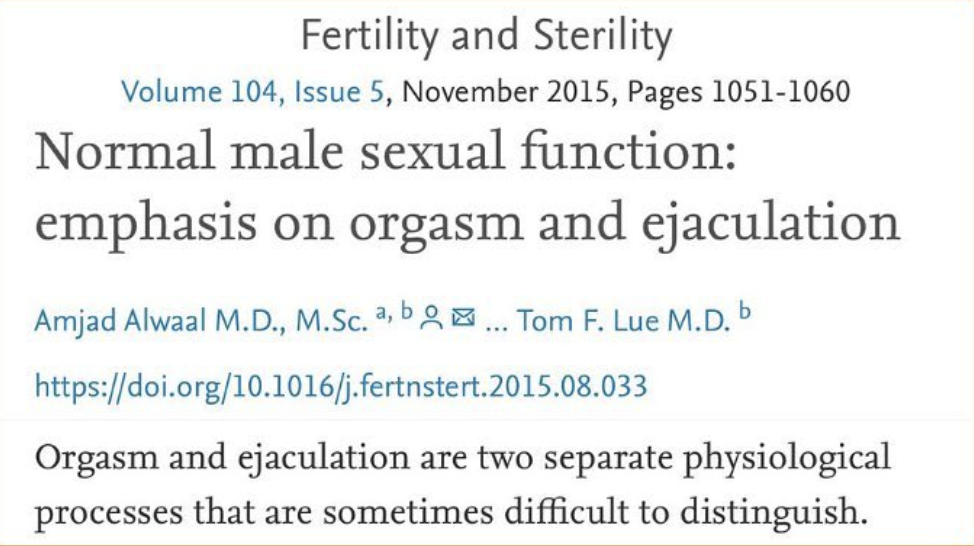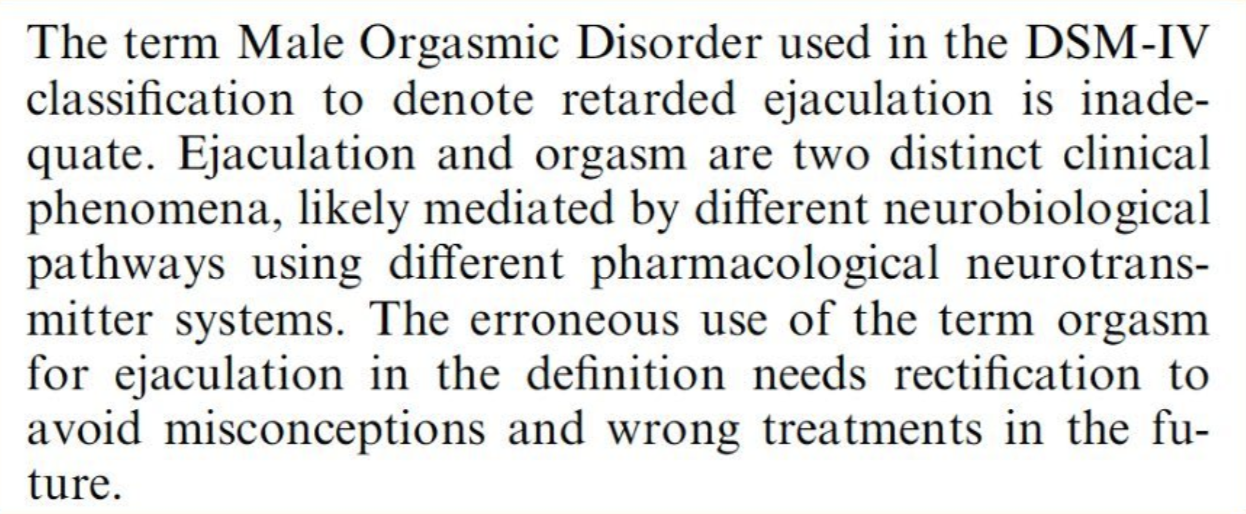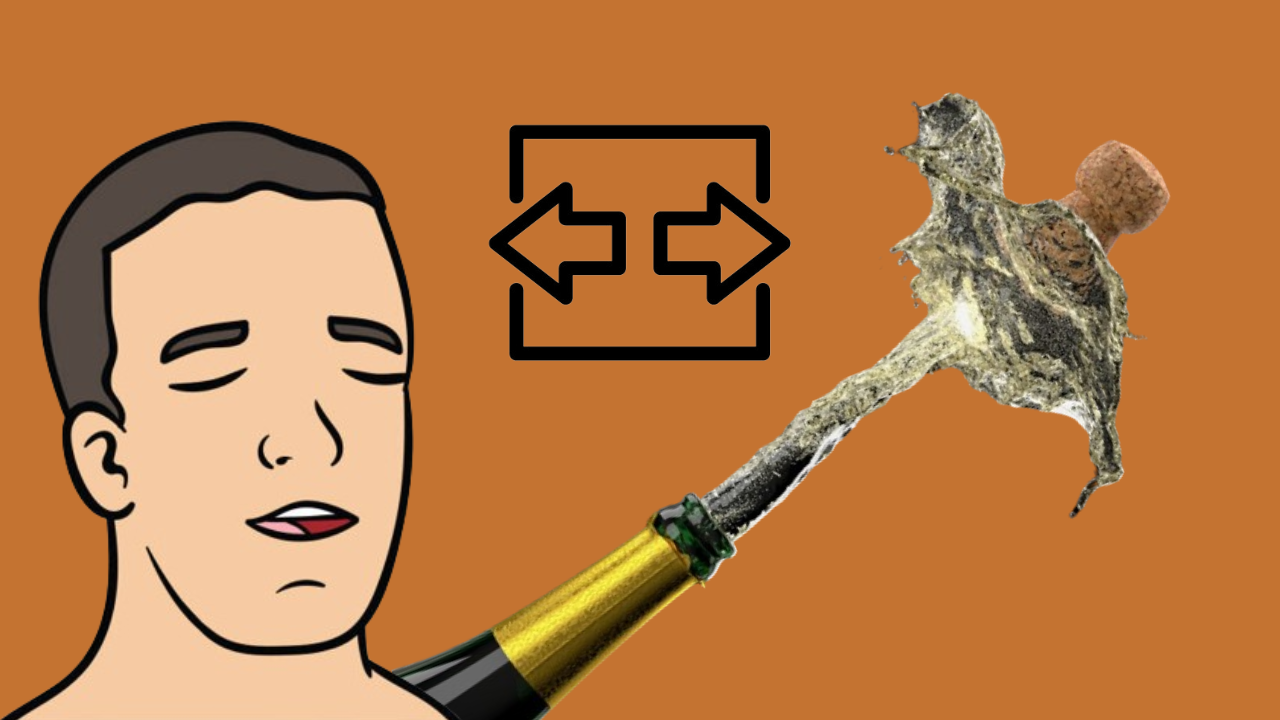Over on TikTok, I posted a video wherein I said that orgasm and ejaculation are two separate physiological processes.


For those unfamiliar with internet lingo, the 🧢 emoji is slang for "lie." A lot of people on TikTok didn't believe me when I said this...
So, I provided a citation for my claim:

Apparently, this was insufficient:


Let's do a deepish dive into research regarding orgasm and ejaculation. The early sexological understanding was that male orgasm was simply the sensation of semen striking the wall of the urethra (van der Velde, 1932).
However, electromyography research found that orgasm actually happens a few seconds before ejaculation (Kollberg, Petersen, & Stener, 1962). During Heath's (1964) epilepsy research, a man with an electrode implanted into his septum who could self-stimulate via a control panel was observed pressing the septal button and "building up to a sexual orgasm."
Then, William Masters and Virginia Johnson's pioneering work in their 1966 book, Human Sexual Response, defined orgasm as the travelling of semen through the urethra and its explosion from the penis; known as emission and expulsion.
Research on men with spinal cord injuries demonstrated that ejaculation can occur without orgasm (Comarr, 1970). Similarly, research on men who had received surgery for bladder cancer demonstrated that orgasm can occur without ejaculation (Bergman, Nilsson, & Peterson, 1979).
However, this conflation of ejaculation (emission and expulsion) with orgasm was the prevailing understanding, prompting Williamss (1985) to write:

Williamss (1985) also presented seven case vignettes of men who'd lost their orgasm sensation but still ejaculated.
Komisaruk and Whipple (1998) then found that a characteristic of orgasmic pleasure, the perception of the body's explosive muscular expression, can be perceived not only in the genital system but also in the respiratory system and other body systems.
This led to Mah and Yitzchak's (2001) critical review of the theoretical and empirical literatures on human orgasm, which is where the following important piece of writing comes from:

This excerpt references 7 studies regarding the separate control mechanisms of emission and expulsion as well as additional 11 studies regarding the distinction between ejaculation and orgasm, stating that conflating ejaculation with orgasm is reductionist.
New neurobiological research posited that orgasm and ejaculation are mediated by different neural circuits (Waldinger & Schweitzer, 2005). Again, a call for the distinction between ejaculation and orgasm was made:

Levin (2011) also states outright that it is possible to have an orgasm without an ejaculation and vice versa. And this finally brings us to my original citation (Alwaal, Breyer, & Lue, 2015).
Then, a systematic review concluded that one way men can have multiple orgasms is by practicing to have orgasm without ejaculation (Wibowo & Wassersug, 2016). Similarly, Griffin-Mathieu et al. (2021) had some survey respondents endorse a pattern of multiple orgasms whereby several orgasms were experienced followed by a final ejaculation.
None of this includes prostate-induced orgasms (Levin, 2018) or non-genital orgasms (Komisaruk & Whipple, 2018), both of which typically don't involve ejaculation.
And if you don't want to take my word for it, maybe you'll consider the 2022 guideline collaboratively developed by the American Urological Association and the Sexual Medicine Society of North America, which clearly state:

While I appreciate these people prompting me to create this content for others who have similar questions, the deliberately ignorant comments were pretty annoying. People like this can take their 🧢 elsewhere.

